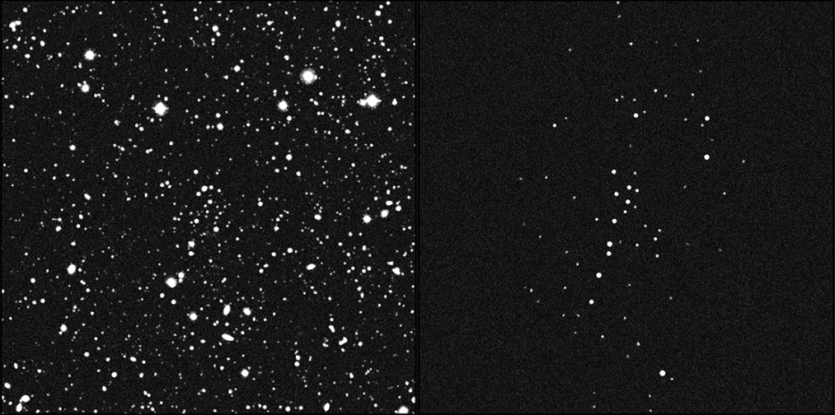
Astronomers have discovered a mysterious object in space that may be the smallest galaxy in the Universe, or the oldest star cluster in the Milky Way.
It is noted that the object, dubbed UMa3/U1, has the characteristics of both a tiny galaxy and a star cluster. The fact is that large galaxies, such as Andromeda or the Milky Way, consist of hundreds of thousands, millions, and even billions of stars gravitationally bound together. In such galaxies, dark matter dominates. In contrast, star clusters, such as the Pleiades, contain about 1 thousand stars or a little more, which are poorly connected to each other gravitationally. There is no dark matter in such clusters.
However, in the case of space objects that are classified as ultra-faint galaxies, the boundaries between the galaxy and the cluster become very blurred. Astronomers believe that such objects contain a thousand times more dark matter than ordinary matter. In addition, such objects often contain the oldest stars.
If UMa3/U1 belongs to tiny ultra-dark galaxies, its name should be Ursa Major III, as it is a satellite of a larger galaxy in the constellation of the Big Dipper. If it is a cluster, its name should be changed to UNIONS 1 because it was discovered by the Ultraviolet Near Infrared Optical Northern Survey (UNIONS).
Astronomers emphasize that if UMa3/U1 is still turns out to be a galaxy. If the object is a star cluster, it will be the smallest of all currently detected galaxies in the Universe with the largest amount of dark matter. If this object does belong to a star cluster, then its age of at least 11 billion years will make it the oldest star cluster known in our Milky Way galaxy.

The diameter of UMa3/U1 is only 20 light-years, and its mass is 16 solar masses. This object includes 60 stars. Comparatively, the diameter of the Milky Way is 100 thousand light-years. For example, the Pleiades star cluster has the same diameter as UMa3/U1, but includes more than 1 thousand stars with a mass of about 800 solar masses.
The models created by astronomers investigated the motion of the stars in UMa3/U1 and showed that this object may be a star cluster that is more stable than similar ones, in which the velocity of stars is not so great. Astronomers have modeled how long it will take for stars to leave the cluster, overcoming gravitational attraction. Based on their modeling, the cluster could last another 2-3 billion years. If it is a cluster, then its mass should be more evenly distributed than observations show.
If it is a galaxy, the stars should be located closer to the center. The distribution of visible stars fits the cluster model quite well, but for the galaxy, the central stars will mostly be white dwarfs and neutron stars, which are too faint to be distinguished by current observations. In general, the evidence indicates that UMa3/U1 is a star cluster, but the authors note that additional observations of other similar objects are needed to make a final conclusion.
Forget dark matter: a ghost galaxy found that «lives» without a key element of the Universe
The results of the study were published on the preprint server Arxiv
Source: Universe Today; LiveScience

Spelling error report
The following text will be sent to our editors: